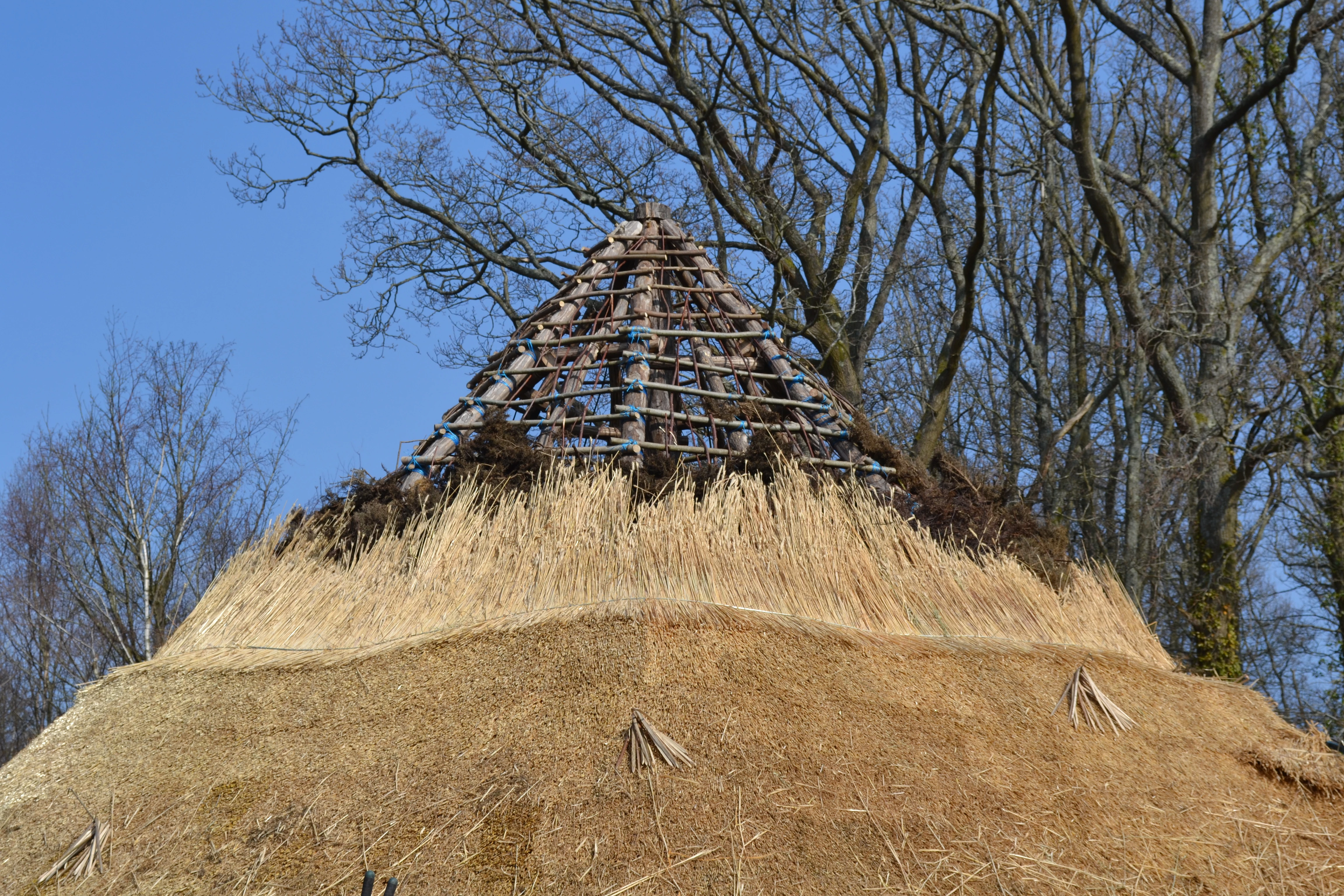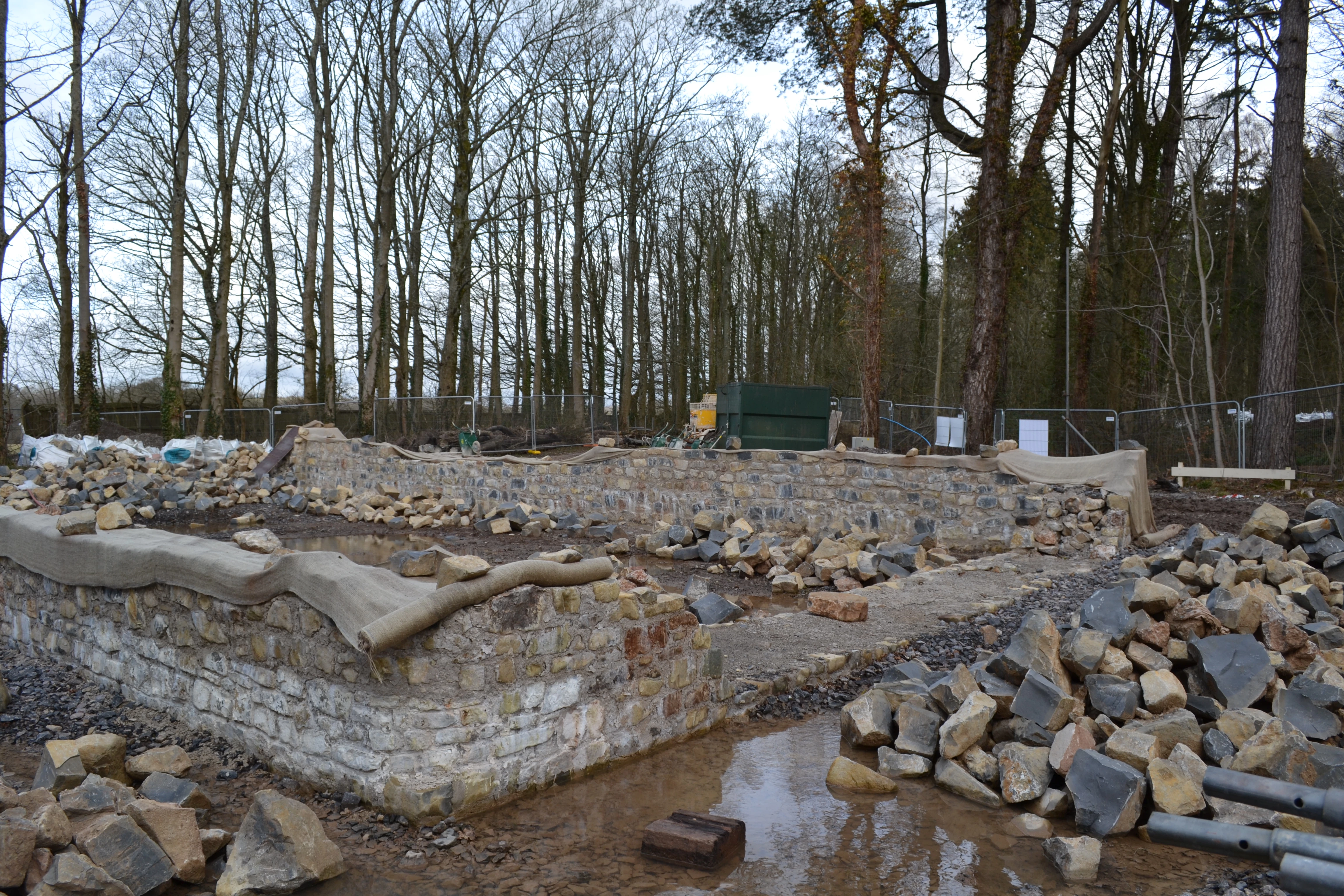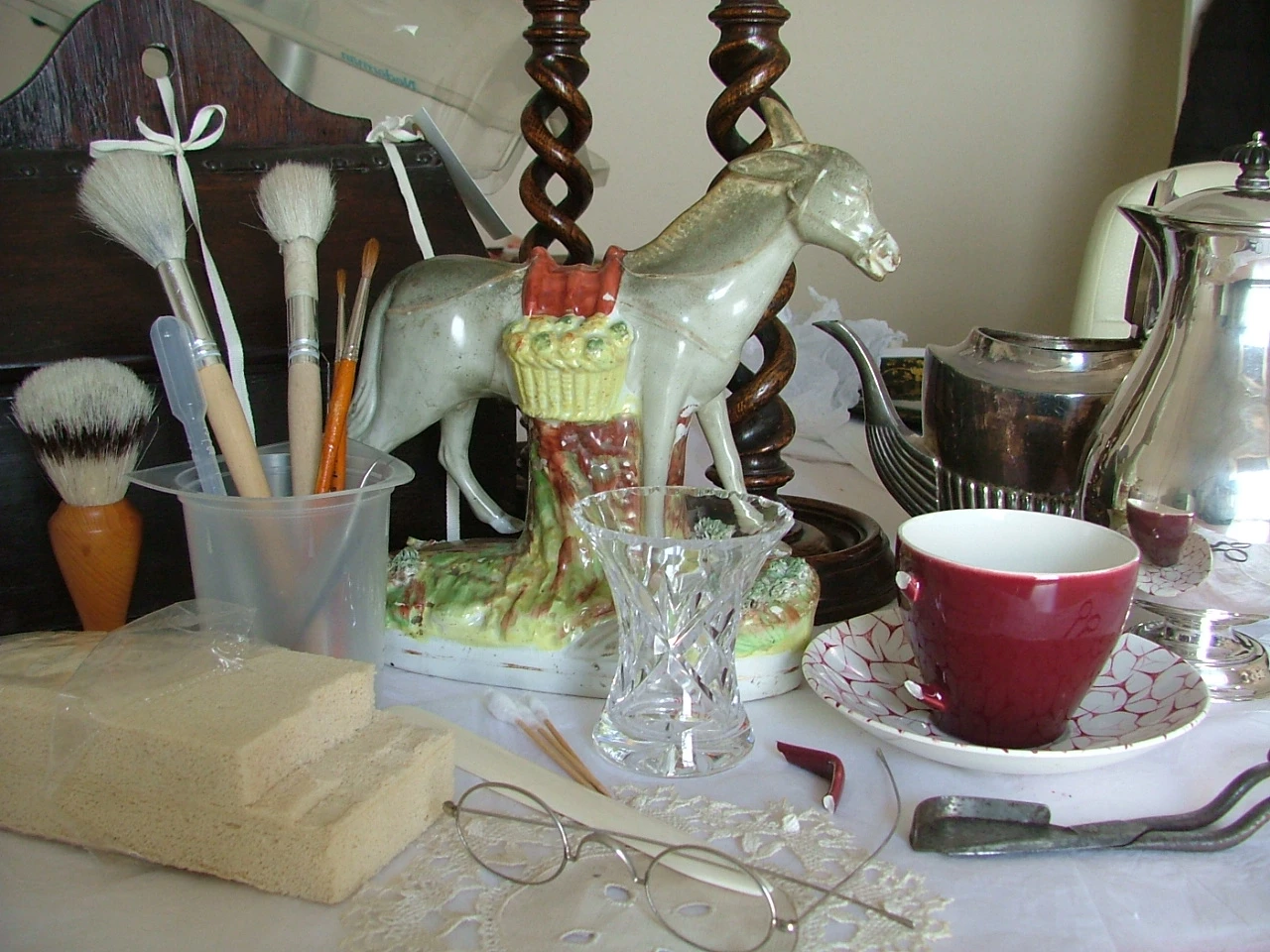Rwyf newydd gychwyn fy mhedwaredd wythnos fel Prif Guradur Adeialdau Hanesyddol yma yn Sain Ffagan, a dyma fy mlog cyntaf. Archaeoleg yw fy nghefndir, ac yn bennodol, archaeoleg arbrofol.
Mae’r math yma o ymchwil archaeolegol yn arbrofi’r syniadau sydd wedi tyfu fel canlyniad o waith cloddio archaeolegol. Yn y bôn rydym yn trio codi rhywbeth a fyddai yn gadael yr un tystiolaeth a ddarganfyddwyd, os cloddiwyd yn y dyfodol. Mae hwn yn herio ein syniadau a codi mwy o gwestiynau.
Tai Crwn o'r Oes Haearn
Dros y blynyddoedd rwyf wedi adeiladu pedwar tŷ crwn wedi seilio ar archaeoleg cartrefi Oes yr Hearn. Gan bod yr archaeoleg yma yn gallu bod yn fâs iawn (ond rhyw 30cm o drwch), mae pob elfen o ail-greuad uwchben y ddaear wedi’i seilio ar waith dyfalu – ei hun wedi seilio ar y dystioilaeth sydd wedi goroesi. Fel allech ddychmygu, mae gweithio allan strwythur adeilad sydd heb yw weld mewn 2,000 o flynyddoedd yn eitha sialens, ond un boddhaol. Felly, mae gen i bleser mawr i fod yn rhan o gyweithiau arbrofol newydd yr Amgueddfa - ailgreuad o ffermdy o Oes yr Haearn, wedi ei seilio ar dystiolaeth o Fryn Eryr yn Ynys Môn, a neuadd ganoloesol Llys llywelyn, wedi ei seilio ar dystiolaeth o Llys Rhosyr, eto yn Ynys Môn.
Mae tô y ffermdy yn cael ei doi gyda gwellt ar y funud, ag yn fuan mi fydd y tŷ yn ddiddos. Mi fydd hwn yn rhyddhâd mawr gan bod glaw trwn dros y Gaeaf wedi atal y waliau clai, 1.8m o drwch i sychu mor gyflym a gobeithio. Mae waliau o glai yn gymharol anarferol gan taw waliau gwial a dŵb neu cerrig sydd wedi eu darganfod gan amlaf. Hwn fydd yr ail-greuad cyntaf o dŷ crwn o’i fath.
Llys Rhosyr - Llys Canoloesol
Mae waliau y ddau adeilad sydd o’r Llys mor uchel a fy mrest, ac mae’r saer maen yn barod i gychwyn y fframau ffenestri. Fe ddarganfyddwyd y Llys yn Ynys Môn, ac fe’i gloddiwyd rhwng 1992 ag 1996. Mae’r waliau cerrig ond yn sefyll ryw fetr o daldra. Felly, yn yr un modd a’r ffermdy, ail-greuad wedi seilio ar dystiolaeth archaeolegol yw hwn.
Mae hanes ysgrifennedig o’r cyfnod, fel ‘Brut y Tywysogion’ yn awgrymmu fod neuadd frenhinol yma, a fu yn un o Lysoedd Llywelyn ap Iorwerth yn ystod hanner cyntaf y drydedd ganrif ar ddeg. Y peth dydyn ni ddim yn gwybod gyda sicrwydd yw pa olwg oedd ar y neuadd. Mae’r wybodaeth yma wedi ei seilio ar gymhariaethau gyda neuaddau Brenhinol eraill, ag adeialdwyd yn yr un cyfnod, fel a welid yng Nghastell Conwy a Phalas yr Esgob yn Nhŷ Ddewi.
Gan fy mod yn bwriadu ysgrifennu blogiau cyson ynglyn a’r datblygiadau diweddaraf, fe wnaf anelu hefyd I amlinellu y gwaith sydd wedi digwydd hyd yn hyn, felly fydd genych fwy o syniad ô’r adeilad hynod yma, ac ein ymgeision i ddod ar Llys yn fyw unwaith eto.







